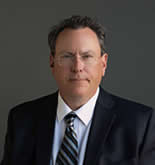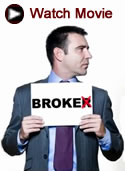The Bureau of Labor Statistics estimates that between 1,600 and 2,000 amputations occur annually due to power press operation. Another 18,000 people receive less serious injuries annually. Injury statistics compiled by OSHA for the years 1975 through 1983 confirm these figures. These numbers are alarming and unnecessarily high. Power presses can be used safely when the presses are properly designed to minimize the hazard that the operator is exposed to.
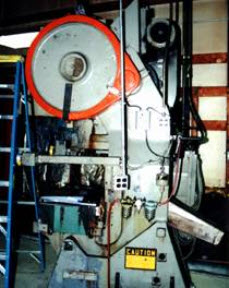
Figure 1: Power presses are a vital part of today's industry
NIOSH's (National Institute for Occupational Safety and Health) website states "There are existing OSHA regulations (29 CFR 1910.217) governing the operation of mechanical power presses. However, data describing injury rates and operator hand speeds indicate that these existing regulations are not effective in providing adequate protection for all power press operators, especially young male operators. It is also important to note that there may be other reasons for these injuries, such as inadequate training of employers and workers. "
The Hierarchy of Design and Presses
The Hierarchy of Design is a process that we at Safety Engineering Resources refer to often. It is a basic design procedure detailed in the Accident Prevention Manual by the National Safety Council and is inferred by the fundamental tenants of several professional engineering societies. The Hierarchy of Design is a step-by-step design procedure where the hazards involved with a product are confronted. The Hierarchy calls for using the most effective method of hazard control as possible for a particular product.
The top priority in safe product design is to eliminate the hazard through design. The solution of designing out the hazard works for everybody. There is no need for the lower priorities if the hazard is eliminated through design.
The second best solution to the problem of potentially dangerous products is to neutralize the hazard with fixed guards, automatic-stop devices, or other protective safety devices. In Priority Two, the designer cannot eliminate the hazard by designing the hazard away. The third alternative is to provide warnings. If the hazard cannot be designed away or guarded away, warnings are the third alternative in the hierarchy of design. Lower yet in the hierarchy of hazard removal is the development and implementation of operation procedures and employee training programs. Behavior modification is difficult to accomplish, which is why it is low on the hierarchy. When all attempts at hazard control are ineffective, protective clothing and gear must be given to the operator of a machine as a last resort. The essence of the hierarchy is that the absolute best method of hazard protection be used.
Hazard Control According to ANSI B11.2-Section 5.2
"Hazard control consistent with the level of risk shall be implemented and shall include, but not be limited to one or more of the following:
- Eliminate or control the hazards by design;
- Control exposure to the hazards by: covers, guards, devices, safe work practices or personal protective equipment;
- Provide awareness of the hazards to personnel"
This section of the Hydraulic Press Standard confirms the hierarchy of safety described above. The ANSI standard calls for the hazard to be eliminated or controlled through design.
How a Power Press Works
There are mechanical, hydraulic, and pneumatic power presses. Although these three types of power presses share common features, the mechanical power press is the type of press most commonly used. The two main components of a mechanical power press are the moving ram which performs the action of the power press, and a stationary bed or surface for the part to be machined. Presses can punch parts out of material, shear off material, form material, assemble metals, all by using a combination of dies attached to the moving ram and bed. A clutch is used to transmit power in the press. Full-revolution clutches remain engaged until the press completes a full cycle. The other type of clutch used is a part-revolution clutch that can be disengaged at any point in the downward stroke of the press. Part-revolution clutches can be safer since the press can be stopped at any point. An operator who gets his or her hand in the point of operation on a full-revolution clutch press is much more likely to get a hand amputated.
Hazards of Power Press Operation
On presses that are not properly guarded, foot switches can be accidentally activated when the operator's hands are near the point-of-operation. A study by NIOSH found that there is a cycling rate above which the frequency of accidental actuation errors increases substantially. The NIOSH research study found that at operational speeds greater than the critical cycling rate "operators performing repetitive tasks begin gradually to lose effective control over their foot movements".
The NIOSH study conducted in 1985 concluded that there are two factors that interact to cause accidental press activation. "Unmediated hand movements" are made in response to machine and work piece problems. An example of this would be a press operator trying to change the placement of a work piece after the press cycle has been triggered. This is known as the "after-reach hazard" which is due to the controls being located too near the point of operation. Young male press operators are at greatest risks due to their high level of reaction speed. The second factor which works to cause accidental press activation is out-of-sequence foot movements, probably caused by a break in the production rhythm or by a loss of balance on the operator's part.
Failsafe Press Design
Power presses have been in operation in this country for many decades. It has long been accepted that the control systems on these presses must work properly in order to prevent personal injury to the operator. In a manually loaded press, an operator is required to put his hands in the point of operation thousands of times in one shift. Coupled with the fact that these presses are capable of large forces, it becomes imperative that the control system work flawlessly. The control system must be designed so that if a component of the controls fails, the machine will be shut down. This is what is called a fail-safe design. In other words, if a part of the unit fails, it will not cause the machine to become unsafe. A fail-safe control valve with an automatic shut off in case of failure was patented in 1953 (U.S. Patent # 2,906,246)
Foot Controls
The triggering of the press cycle can be either automatic or manual. Manually triggered power presses are controlled by hand switches or foot switches. In a study performed by OSHA, the number of accidents with foot-controlled power presses is double the number of accidents with a hand-controlled press. Foot controls are activated by pressing down on a foot switch which leaves the hands free during the press cycle. Foot controls do not automatically protect the operator from the point-of-operation hazard since the operator could have his or her hands in the point of operation while triggering the foot switch and causing the press to cycle. Presses with foot controls must have the point-of-operation guarded with some sort of barrier. These guards must have interlocks on them to prevent them from being removed by machine operators. It is an established fact that workers may remove or override guarding when possible to make it easier to do their job. Interlocking is where guards are tied into the control of the machine where if a guard is tampered with or removed, the machine will be "locked out"; the machine will not cycle. A future Forensic Clues will deal with this topic in detail. Power presses that fail to use interlocking are not following the hierarchy of design, since they are not using the most effective method of hazard control.
Hand Controls
Hand controls can be designed to function as a hazard control. Dual palm button controlled presses require that both of the operator's hands be on the control buttons, which means that the operator's hands cannot be in the point of operation when the press is cycled. This design reduces the hazard of operator injury, but does not prevent injury to anyone other than the person controlling the press.
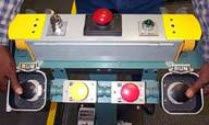
Figure 2: Dual Hand Buttons increase safety (NIOSH)
Productivity may be less with hand controlled presses than with foot controlled presses. This is due to the operator's hands being free to move during the entire press cycle on a foot-controlled press. This same increase in productivity comes with a price. Foot controlled press operators are at a greater risk of obtaining a point-of-operation injury.
Safeguards for Power Presses
Manufacturers must safeguard the hazards inherent in press design. The effective methods of safeguarding either prevent the operator from physically being able to reach the point of operation during the down-stroke with guarding and interlocking, or use presence sensing devices like light curtains that prevent the press from cycling when the operator becomes too near the point of operation.
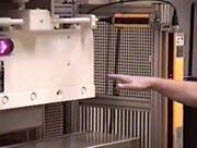
Figure 3: Light curtains can help prevent press accidents (NIOSH)
Some power press accidents occur because the operator places his or her hand into the point of operation of the press after the press cycle is initiated. Most preventive measures on power presses involve using guards to prevent an operator from being able to place his or her hands in the working zone. Keeping the operator's hands away from the point of operation may be difficult in situations where the shape and/or size of the part being made encourages the operator to place his or her hands near the point of operation. The hierarchy of design as well as the ANSI standard for power presses calls for the hazard to be controlled by design if possible. The manner of controlling a press affects the safety of the press, and the hazard of the press can be minimized by utilizing proper design safety procedures.
Conclusion
Press accidents continue to occur despite ANSI and OSHA standards that address the different types of presses and controls and how to safeguard them. Most of these accidents occur when the press is activated while the operator's hands are still in the point of operation. Engineering principles must be used in determining a design to safeguard the hazards in a press. A properly guarded press with interlocks would be unlikely to cause injury to an operator.






